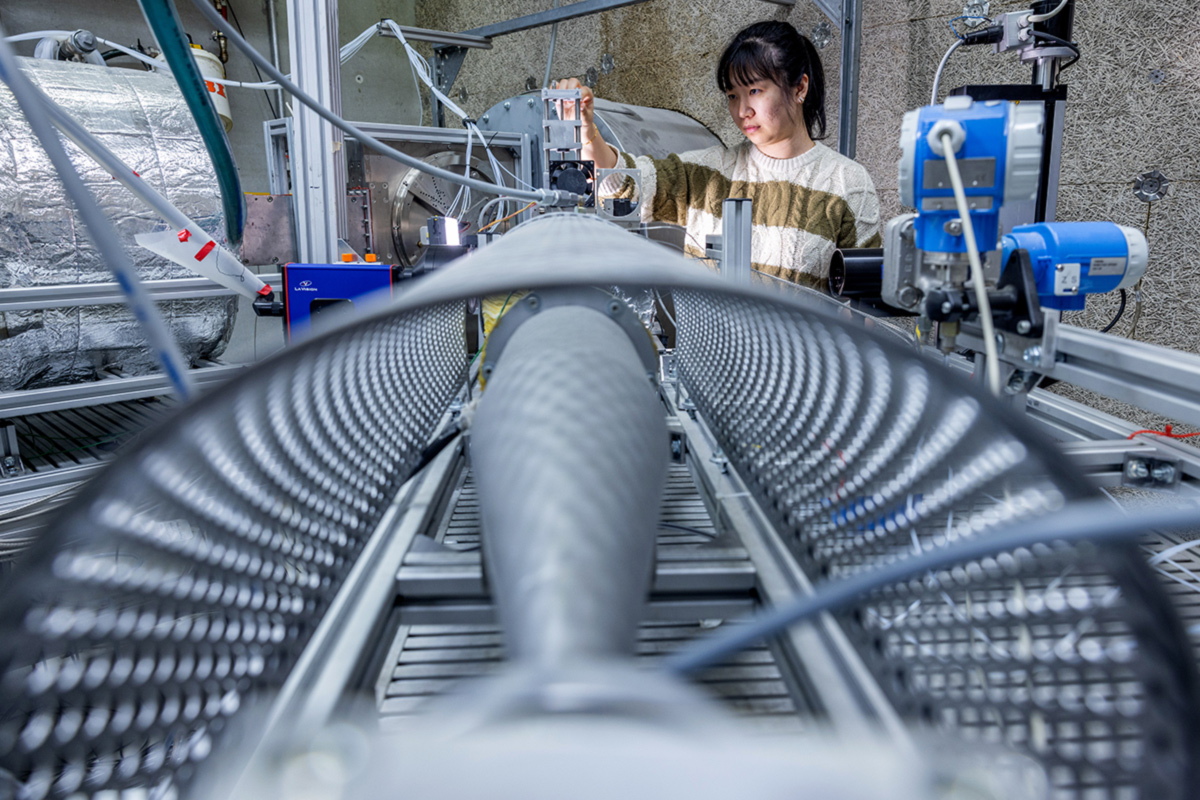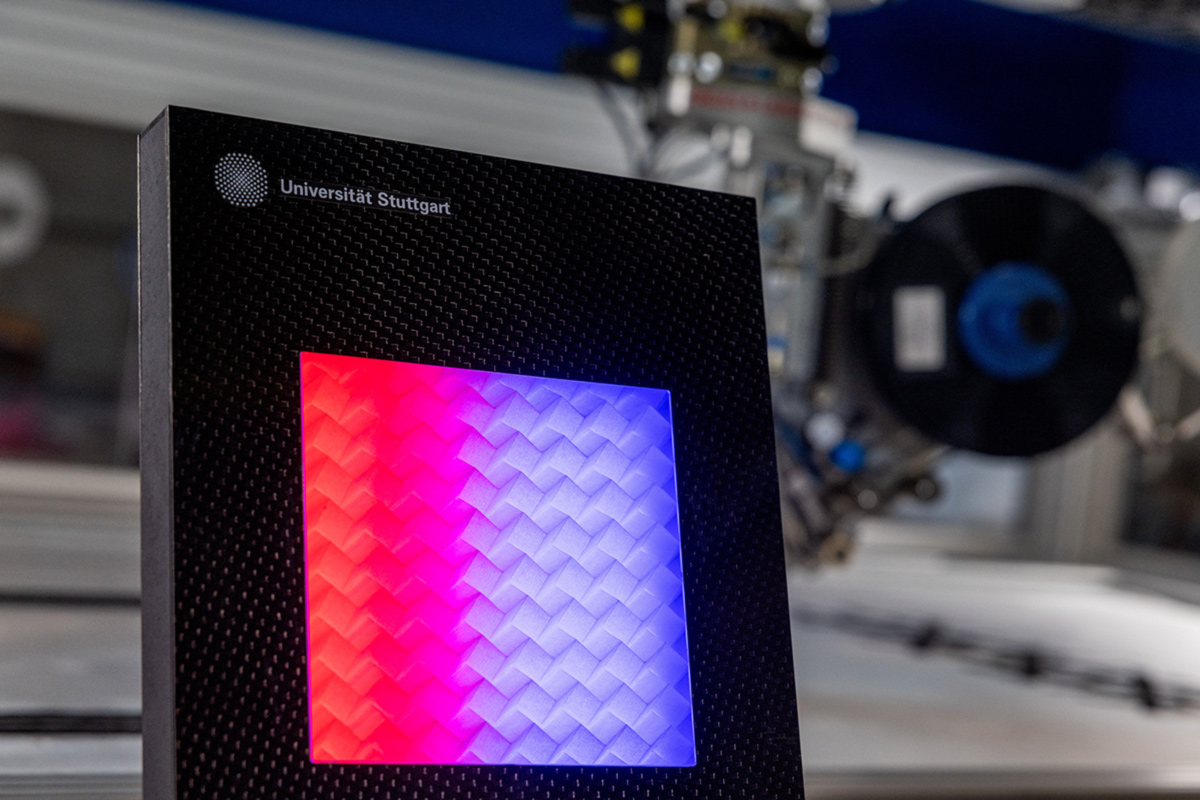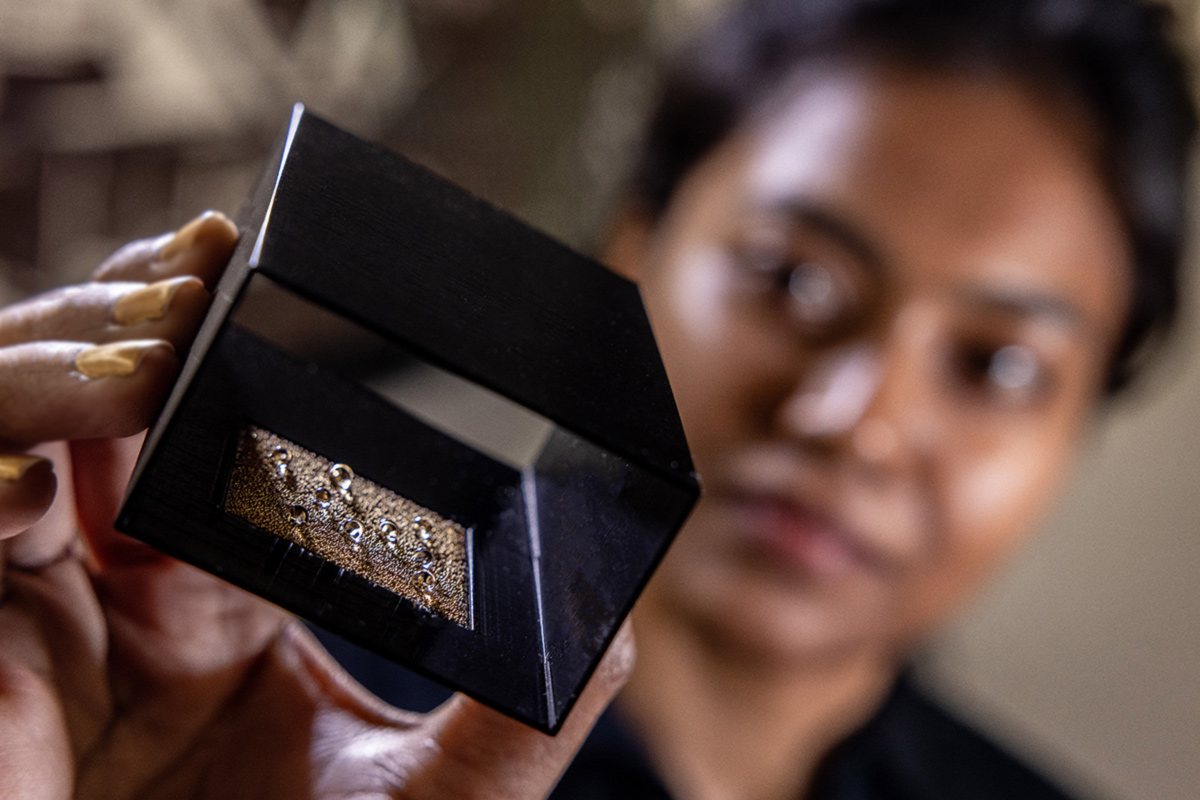C01: Composite materials with thermo-mechanical functionality for future integrated propulsion systems
The higher weight of novel energy storage solutions in aircraft call for a higher lightweight potential as well as load-path oriented orthotropic design options. Furthermore, new functionalities such as optimised heat distribution zones are also required. Hence, the project C01 will examine the potential of structure-integrated thermal management by using hybrid laminates with continuous (fibre reinforced polymers doped with graphene materials) and discrete (fibre metal laminates, hybridisation) functionalisation. The investigations will include experimental and numerical methods that are suitable to design and validate dedicated intra- and interlaminar heat flux paths of these composite materials with realistic boundary conditions e.g. for the known thermal convection in a dedicated test chamber.
Motivation
Weight reduction by a structurally integrated thermal management in an optimised composite material.
- In a highly integrated transport aircraft, there are a large number of local heat sources.
- The thermal conductivity of fibre-reinforced plastics, especially in the thickness direction, is low.
- Heat sources have to be linked to optimal placed heat distribution zones without additional system weight.
Objective
- Research hypothesis: By discrete and continuous functionalization of the fibre reinforced polymer, the thermal conduction in the longitudinal and thickness is integrated into the primary structure according to the requirements.
◦ PR Middendorf focuses on continuous functionalization at material level
◦ PR Hühne on discrete functionalization through hybridization of the laminates - Development of experimental and numerical methods for the design of dedicated intra- and interlaminar heat flow paths
Approach
The project begins with the analysis of thermal requirements to define thermo-mechanical loadings, boundary conditions, and test case scenarios. Following this, experimental investigations are conducted, including material characterization and process optimization. This involves continuous functionalization on the material level, such as graphene doping, and material characterization for tailored fibre metal laminates. Additionally, it involves local hybridization through fibres, metal foils, and bolts, along with the definition and set-up of a plate test chamber. The project then shifts its focus to thermal analysis using finite element models. This includes predicting thermo-mechanical properties in the thickness direction based on a single-ply level and layer-by-layer approach. It also involves pre-test simulation of plate experiments and post-test analysis based on experimental data. Finally, design guidelines are defined, deriving outputs for several design and configuration considerations.
Role in SynTrac
- C01 provides findings for the structural integration of propulsion systems in cross-system integration area B.
- C01 needs the CRC to receive input from other disciplines and cross-system assessments
- Strong interactions are therefore given with respect to experiments, methods and models, design and physical parameters.











